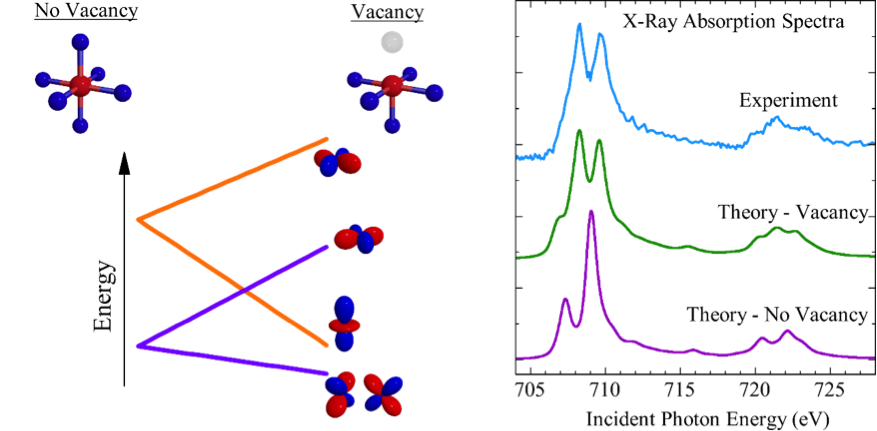The endless pursuit of faster, more energy-efficient computers has led to the emergence of the field of spintronics, where the manipulation and detection of electron spins are utilized in electronic circuits. A particular class of materials called dilute magnetic oxides are promising candidates for spintronics applications because they exhibit the necessary combination of magnetic and semiconducting properties. But most dilute magnetic oxide studies have been plagued by inconsistencies, as the desired room-temperature ferromagnetism is very sensitive to sample-growth parameters and can easily be swamped by magnetic contamination. However, the substitution of Fe atoms into In2O3 (In2O3:Fe) has recently yielded a very consistent and promising material.
Using the soft x-ray absorption and scattering capabilities at Beamline 8.0.1, researchers studied In2O3:Fe to determine what leads to its surprisingly robust magnetic properties. They found that a subset of the impurity Fe atoms take residence in atomic sites that are directly adjacent to sites with a missing oxygen atom—the oxygen vacancies. Such positioning leads to a very strong perturbation of the Fe 3d orbital energies, which was detected in the x-ray experiments.
The results demonstrate the crucial importance of oxygen vacancies in such materials and that the close proximity of magnetic impurities to the oxygen vacancies facilitates strong exchange interactions, which lead to robust magnetism.
The research explains the mechanism behind the magnetism of In2O3:Fe, gives indications on how to optimize it, and provides key criteria in the search for and optimization of other candidate spintronics materials.

Work performed at ALS Beamline 8.0.1.
R.J. Green, T.Z. Regier, B. Leedahl, J.A. McLeod, X.H. Xu, G.S. Chang, E.Z. Kurmaev, and A. Moewes, “Adjacent Fe-vacancy interactions as the origin of room temperature ferromagnetism in (In1-xFex)2O3,” Physical Review Letters 115, 167401 (2015).